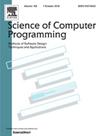Enhancing decision-making for software architects: selecting appropriate architectural patterns based on quality attribute requirements
IF 1.4
4区 计算机科学
Q3 COMPUTER SCIENCE, SOFTWARE ENGINEERING
引用次数: 0
Abstract
Decision-making in software architecture is complex and requires expertise across domains. A key challenge is balancing software quality attributes. Architectural patterns, as knowledge repositories, offer solutions to recurring design problems. Thus, a structured approach to selecting patterns based on quality requirements is essential.
This paper presents an approach to improve decision-making in selecting architectural patterns concerning software quality attributes. Our method helps architects choose suitable patterns to achieve desired quality outcomes. For new or evolving systems, it recommends patterns aligned with target attributes, while for existing systems, it suggests improvements to enhance architecture.
We use Case-Based Reasoning (CBR) to achieve this goal. Eight architectural patterns were selected as cases, and relevant features were identified using the Repertory Grid Technique (RGT), with feature extraction performed by five experts. By computing similarity between RGT vectors and CBR cases, our method predicts the most appropriate pattern. The proposed approach achieves 83 % accuracy, demonstrating its effectiveness.
增强软件架构师的决策:根据质量属性需求选择合适的架构模式
软件架构中的决策是复杂的,需要跨领域的专业知识。一个关键的挑战是平衡软件质量属性。架构模式作为知识库,为反复出现的设计问题提供解决方案。因此,基于质量需求选择模式的结构化方法是必不可少的。本文提出了一种改进基于软件质量属性的体系结构模式选择决策的方法。我们的方法帮助架构师选择合适的模式来实现期望的质量结果。对于新的或发展中的系统,它推荐与目标属性一致的模式,而对于现有的系统,它建议改进以增强体系结构。我们使用基于案例的推理(CBR)来实现这个目标。选择8种建筑模式作为案例,利用储备网格技术(RGT)识别相关特征,并由5名专家进行特征提取。通过计算RGT向量与CBR案例之间的相似性,我们的方法预测出最合适的模式。该方法的准确率达到83%,证明了其有效性。
本文章由计算机程序翻译,如有差异,请以英文原文为准。
求助全文
约1分钟内获得全文
求助全文
来源期刊

Science of Computer Programming
工程技术-计算机:软件工程
CiteScore
3.80
自引率
0.00%
发文量
76
审稿时长
67 days
期刊介绍:
Science of Computer Programming is dedicated to the distribution of research results in the areas of software systems development, use and maintenance, including the software aspects of hardware design.
The journal has a wide scope ranging from the many facets of methodological foundations to the details of technical issues andthe aspects of industrial practice.
The subjects of interest to SCP cover the entire spectrum of methods for the entire life cycle of software systems, including
• Requirements, specification, design, validation, verification, coding, testing, maintenance, metrics and renovation of software;
• Design, implementation and evaluation of programming languages;
• Programming environments, development tools, visualisation and animation;
• Management of the development process;
• Human factors in software, software for social interaction, software for social computing;
• Cyber physical systems, and software for the interaction between the physical and the machine;
• Software aspects of infrastructure services, system administration, and network management.
 求助内容:
求助内容: 应助结果提醒方式:
应助结果提醒方式:


